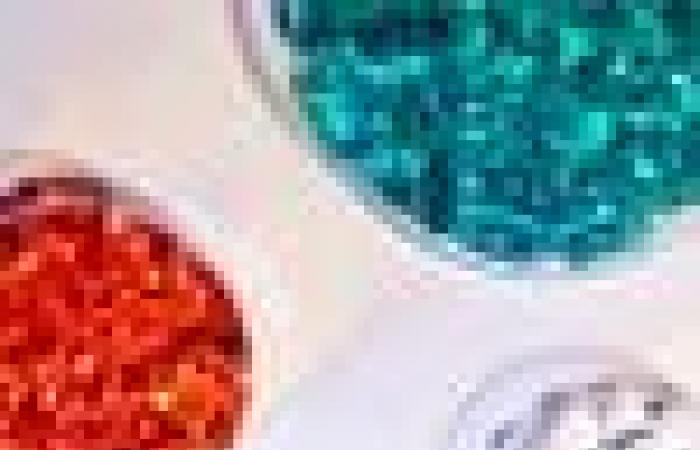- Light therapy is used to treat seasonal affective disorder (SAD) because it can help regulate dopamine and serotonin levels.
- Experts recommend that you spend 20 to 30 minutes in front of a 10,000 lux light box every day from late September to late winter for light therapy to be effective.
- This article has been medically reviewed by David A. Merrill, MD, PhD, psychiatrist and director of the Pacific Brain Health Center at the Pacific Neuroscience Institute at Providence Saint Johns Health Center in Santa Monica, California.
- Check out Insider’s Insider Reference Library for more advice.
Light therapy is considered the initial treatment for seasonal affective disorder (SAD), a type of depression that occurs in fall and winter. Here you can learn more about this treatment and how you can use it effectively.
What is Seasonal Affective Disorder (SAD)?
About 4% -6% of American adults have SAD, which occurs in fall and winter and usually subsides in spring and summer. Research has linked SAD to changes in the amount of daylight and found that it is more common in areas far from the equator, and therefore having shorter, darker days in winter.
“SAD is generally a mood swelling into a depressed state,” says Dr. Gonzalo Laje, Director of Washington Behavioral Medicine Associates, LLC and Clinical Associate Professor of Psychiatry and Behavioral Science at George Washington University in Washington DC
“It’s a real thing, and we have a very interesting approach to treatment, not just traditional antidepressants but light therapy,” he says.
To understand how light therapy works, it is important to understand the biological causes of SAD. Research shows that people with SAD have three possible biological causes that contribute to their depression during the darker months:
- You have problems regulating the serotonin transporter protein. These proteins bind to the neurotransmitter serotonin and make it inactive. One study found that people with SAD have more serotonin transporters during the winter months. As a result, there is less serotonin available, and low serotonin levels have been linked to depression.
- You overproduce melatonin. Melatonin is a hormone that promotes sleep. The body makes it when it’s dark, but people with SAD produce too much melatonin, making them feel sleepy and sluggish and disrupting their circadian rhythms or internal clocks.
- They underproduce vitamin D. Vitamin D, activated by exposure to the sun, can regulate mood. Low vitamin D levels are linked to depression.
How light therapy works
Light therapy can help regulate melatonin and serotonin levels, which helps offset some of the depressive symptoms associated with SAD.
Light therapy works in such a way that it is designed to compensate for the bright light that people don’t get during the winter months, especially in colder, darker climates.
“There is a clear relationship between ambient light – sunlight – and mood,” says Laje. “Light therapy tries to overcome a little of this lack of light with artificial light.”
A 2006 double-blind randomized controlled clinical trial found that light therapy improved symptoms in 67% of patients. This corresponds to the improvement of the antidepressant fluoxetine, which belongs to the SSRI class of drugs. Selective serotonin reuptake inhibitors (SSRIs) are the most commonly prescribed antidepressants.
Experts believe that light therapy is so effective because it regulates serotonin and melatonin production. For example, researchers have found that light therapy can reduce serotonin transporter binding, which leaves more of the feel-good serotonin hormone available in the brain.
Scientists have also found that increasing daytime exposure to artificial light can lower melatonin levels during the day in people with SAD.
How to practice light therapy effectively
Just having a brightly lit room isn’t effective light therapy, says Laje. According to the Mayo Clinic, to reap the benefits of light therapy, you must be exposed to a 10,000 lux light box for 20 to 30 minutes a day.
According to Laje, for light therapy to work, you need to sit 1.5 to 2 feet away from the light box. It’s going to feel a little uncomfortable because it’s so bright.
“It has to be a little uncomfortable to be effective,” he says. “It’s very, very bright. You lose effectiveness very quickly when you are far away.”
However, the brightness can damage your eyes so you should never look directly at the lamp. He recommends staying engaged while you sit near the light box and read a book or newspaper.
Since light therapy affects your biological clock, Laje recommends doing it in the morning and never in the afternoon, as this could disrupt your normal sleep-wake pattern and make it difficult for you to fall asleep that night.
He recommends that patients perform light therapy for 20 to 30 minutes a day, beginning at the end of September or beginning of October and into the winter months.
Light Therapy Health Considerations
“While light therapy seems almost trivial, it can cause problems,” he says. For example, people with bipolar disorder could become manic and should only use light therapy with their doctor’s guidance, he says. For this reason, it is always important to speak to your doctor and seek advice before starting any light therapy.
Light therapy alone can work for some people, but sometimes others also need antidepressants or advice, says Laje. If your symptoms of depression do not get better or get worse with your treatment plan, contact your doctor right away.
Since the lamps used in light therapy do not emit any UV rays, there is no risk of cancer, according to Laje.
Takeaways
Light therapy is an effective way to control symptoms of seasonal affective disorder. The dim light of winter can affect serotonin and melatonin levels, making you feel sluggish, tired, or depressed.
Spending 20 to 30 minutes in front of a very bright lamp at around 10,000 lux units can help you overcome SAD symptoms, regulate your time of day, and feel better during the winter months, says Laje.
“I am always fascinated by these approaches that are simple, effective and generally safe,” he says. “With light we can help our mood.”
These were the details of the news Light Box Therapy For Depression: How To Use It Effectively For... for this day. We hope that we have succeeded by giving you the full details and information. To follow all our news, you can subscribe to the alerts system or to one of our different systems to provide you with all that is new.
It is also worth noting that the original news has been published and is available at de24.news and the editorial team at AlKhaleej Today has confirmed it and it has been modified, and it may have been completely transferred or quoted from it and you can read and follow this news from its main source.



